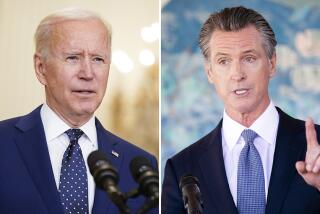Iranians brace for fuel subsidy cuts
Iranians braced themselves Sunday as the government launched a series of subsidy cuts expected to increase the price of fuel as much as ninefold and jack up the cost of such necessities as bread and water.
Although parliament had approved the plan to slash decades-old subsidies this year, President Mahmoud Ahmadinejad caught the public off-guard when he announced in a television interview late Saturday that the new prices would be implemented over the next 10 days.
Ahmadinejad, who fashions himself as a populist leader eager to serve the interests of the poor against corrupt fat cats, finds himself in the uncomfortable position of strenuously defending a policy favored by neoliberal Western economists and the International Monetary Fund.
Iran’s new class of wealthy merchants and traders will feel little pain from the subsidy cuts, but ordinary Iranians will be hit hard.
If the plan works, it will make Iran more self-sufficient, economically lean and impervious to Western sanctions, which have taken a heavy toll on the economy. But the cuts are being imposed at a time of political tension, economic hardship and international isolation over Iran’s pursuit of a controversial nuclear development program.
Security forces were deployed at gasoline stations and major thoroughfares in and around Tehran in case frustrations at the fuel pump boiled over into popular unrest. Riots erupted in 2007 when Iran first implemented a system for limiting the consumption of subsidized fuel.
Details of the price changes trickled out through the official news media. On Sunday, prices for all the targeted items appeared unchanged, except for natural compressed gas, which shot up nearly 500% to the equivalent of about 30 cents per cubic meter.
Over the next 10 days, the price of diesel fuel, is expected to increase from six cents to 57 cents per gallon for the first 16 gallons, and to $1.32 for every gallon over the monthly quota. The rise in shipping costs is expected to boost the price of other goods significantly.
Subsidized gasoline will jump from 38 cents to $1.48 a gallon, and to $2.64 for every gallon beyond the monthly quota.
Iran’s complicated fuel subsidy system is managed by a smart card system; drivers are allotted monthly allowances of cheap fuel but must pay market prices beyond their quotas.
Utility prices have already been inching higher for months and are expected to jump considerably under the subsidies removal plan. According to the official Islamic Republic News Agency, electricity prices are set to triple to 4.5 cents per kilowatt hour, water nearly quadruple to 28 cents per cubic meter and heating gas to more than quintuple to 7 cents per cubic meter.
The price of flour will increase from less than a penny to 13 or 14 cents a pound.
The government is hoping to offset the initial shock of the price increases by providing people $40 monthly in cash deposits into their bank accounts. And for the first month, they will receive 13.2 gallons of free gas for each car.
“Theoretically … the government’s income from slashing the subsidies is going to be $100 million per day,” said journalist and economist Saeed Laylaz. “Out of that, 30% should go back into industries to compensate for their expenses and overhead; 20% goes to the pockets of the government for civil development projects; and 50% to the people as cash subsidies in their bank accounts.”
The government has muzzled criticism of the plan. On Sunday, authorities jailed the left-leaning economist Fariborz Raisdana, who criticized the plan as unfair in a television interview on BBC Persian.
Ahmadinejad has accused foreign news media of spreading negative rumors about the impact of the subsidy cuts on middle- and lower-class Iranians.
“I have seen that some foreign media are making statements against the plan,” he told the state-run television on Saturday. “They are upset and do not like Iran to progress.”
But frustration is simmering, especially among transportation workers who have been forbidden to raise prices they charge customers despite the increase in the price of fuel.
Ali, a cabdriver, told The Times that before Sunday, filling the tank of his natural-gas-operated taxi cost about 80 cents.
“Today, the same full tank cost me more than $4.50, so I paid around fivefold more,” he said.
Laylaz, the economist, said he hoped the increase in fuel prices would have one positive side effect: reducing traffic congestion and thinning out the infamous smog that clouds the capital.
“I am happy to see the streets in Tehran less crowded today, and at least we will have less pollution,” he said.
Special correspondents Mostaghim reported from Tehran and Lutz from Beirut. Times staff writer Borzou Daragahi in Beirut contributed to this report
More to Read
Start your day right
Sign up for Essential California for news, features and recommendations from the L.A. Times and beyond in your inbox six days a week.
You may occasionally receive promotional content from the Los Angeles Times.






